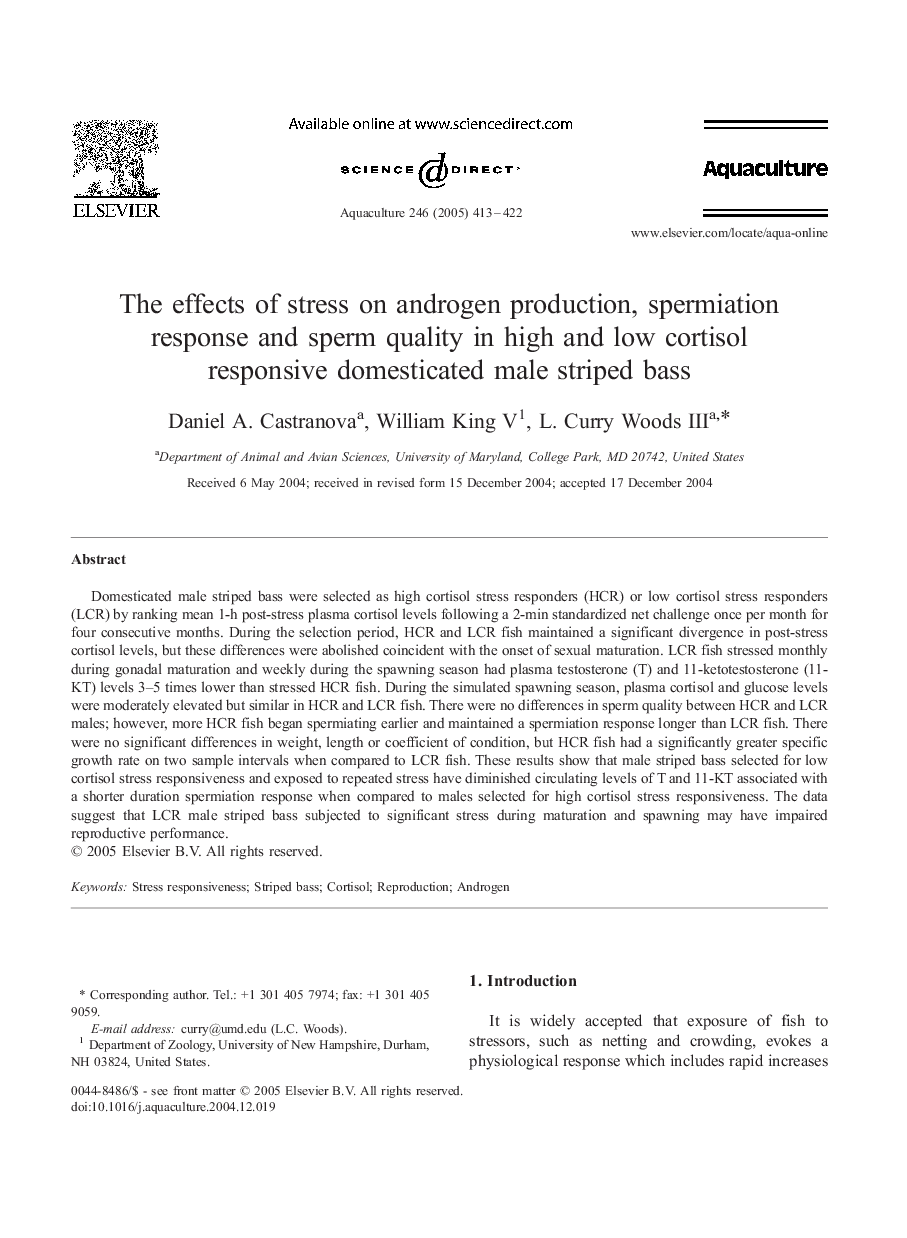| Article ID | Journal | Published Year | Pages | File Type |
|---|---|---|---|---|
| 8974758 | Aquaculture | 2005 | 10 Pages |
Abstract
Domesticated male striped bass were selected as high cortisol stress responders (HCR) or low cortisol stress responders (LCR) by ranking mean 1-h post-stress plasma cortisol levels following a 2-min standardized net challenge once per month for four consecutive months. During the selection period, HCR and LCR fish maintained a significant divergence in post-stress cortisol levels, but these differences were abolished coincident with the onset of sexual maturation. LCR fish stressed monthly during gonadal maturation and weekly during the spawning season had plasma testosterone (T) and 11-ketotestosterone (11-KT) levels 3-5 times lower than stressed HCR fish. During the simulated spawning season, plasma cortisol and glucose levels were moderately elevated but similar in HCR and LCR fish. There were no differences in sperm quality between HCR and LCR males; however, more HCR fish began spermiating earlier and maintained a spermiation response longer than LCR fish. There were no significant differences in weight, length or coefficient of condition, but HCR fish had a significantly greater specific growth rate on two sample intervals when compared to LCR fish. These results show that male striped bass selected for low cortisol stress responsiveness and exposed to repeated stress have diminished circulating levels of T and 11-KT associated with a shorter duration spermiation response when compared to males selected for high cortisol stress responsiveness. The data suggest that LCR male striped bass subjected to significant stress during maturation and spawning may have impaired reproductive performance.
Related Topics
Life Sciences
Agricultural and Biological Sciences
Aquatic Science
Authors
Daniel A. Castranova, William V, L. Curry III,
